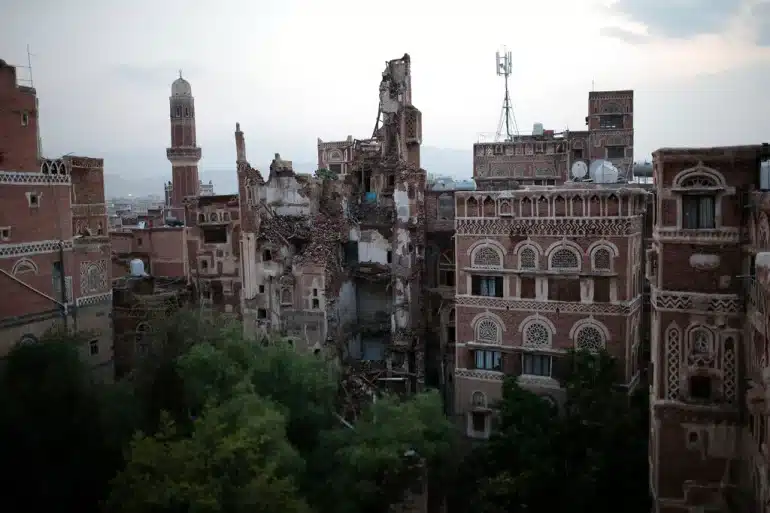Heavy rains lashing Yemen’s capital of Sanaa, which dates back to ancient times, have in recent days collapsed 10 buildings in the Old City, the country’s Houthi rebels said Wednesday.
At least 80 other buildings have been heavily damaged in the rains and need urgent repairs, the rebels, who have controlled Sanaa since the outbreak of Yemen’s civil war more than eight years ago, said on Wednesday.
The Old City of Sanaa is a UNESCO World Heritage Site, and the area is believed to have been inhabited for more than two millennia. Its architecture is unique, with foundations and first stories built of stone, and subsequent stories out of brick – deemed to be some of the world’s first high-rises.
The buildings have red-brick facades adorned with white gypsum molding in ornate patterns, drawings comparisons to gingerbread houses – a style that has come to symbolize Sanaa. Many of the houses are still private homes and some are more than 500 years old.
The houses had stood for centuries, but this season’s intense rains have proved too much for the iconic structures. Bricks and wooden beams now make for massive piles of rubble between still-standing structures.
In an official statement, the Sanaa authority urged businessmen and financers to help finance the maintenance and restoration of homes that are at risk of collapsing in old city Sanaa, especially since there are more than 100 homes that are at risk of collapse.
In 2020, floods caused by heavy rains caused similar damage to many historic buildings in the old city of Sanaa and undermined conservation efforts.
According to Muhammad Haidara, Deputy Minister of Culture, “as a result of the rains and torrents that fell on the old Sana’a in the last period, many houses were destroyed due to the rains, as well as the aggression and siege that was applied to the Yemeni people, including the people of old Sana’a.”
“I get scared when I hear the rain and pray to God because I am afraid that my house will collapse on me,” said Youssef al-Hader, a resident of the Old City.
Al-Kabsi insisted that UNESCO bear some responsibility for salvaging and restoration efforts, given the area’s history. Years of neglect under the previous government had taken their toll, he added.
Both sides of the Yemeni conflict claim that the other is responsible for the disaster. The Houthis say air attacks on Sanaa by the Saudi-led coalition have probably shaken the historical buildings and damaged their foundations. But lack of maintenance is the biggest problem, according to Mohamed al-Hakeem, who heads a local organization called The Green Dream, specializing in Yemen’s environmental issues.
Meanwhile, the Houthis are being blamed for the damage to the buildings. This is because the Houthis have controlled Sanaa, and have used this area for their forces. Thus, this has damaged the foundations of the buildings, causing their eventual destruction. The war in Yemen has not only affected the lives of the future of Yemen, but it also affected Yemen’s past and history. The war is ruining Yemen’s legacy and story, and the end of this conflict does not seem to be anywhere in sight.



















